| Still Digital
Camera versus Webcam After
purchasing my digital still camera (Nikon Coolpix 995) I
was very curious to compare its light gather capabilities
to my webcam Vesta 675 SC2.
I set both cameras to tripods abreast.
Pictures from Coolpix were taken at full resolution (2048x1536)
with normal jpeg compression. Then they were resampled to
VGA and QVGA resolution by Lanczos interpolation. No
further processing was used. The aperture of digicam was
set to 3.0 in order to achieve same conditions for both
cameras. Also focal length was set to 8.8mm in order to
achieve approximately the same field of view as webcam.
Pictures from Vesta were captured at 640x480 resolution.
The ambient temperature was about 25°C. All Nikon
Coolpix 995 photos were taken without cooling. Vesta
photos were taken with and without cooling.
For better comparison, please calibrate
your monitor (set maximum possible contrast, to see
details in dark areas of test images):

Comparison
of Nikon Coolpix 995 digital camera versus Philips Vesta
675SC webcam
| Low room light - three 60W
incadescent lamps - each working at 15W triac
regulation) |
| NIKON
CoolPix 995 |
Philips
Vesta 675 SC2 |
Note |

F3.0, 1s, ISO 400, Incadescent |

F3.0, 1/5s, Gain 100%, Incadescent |
The room was illuminated by
three 60W incadescent lamps - each working at 15W
(triac regulation). That's why color temperature
of light was shifted to red part of spectrum. |

The same picture as above (for better comparison) |
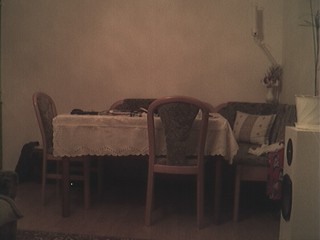
F3.0, 1/5s, Gain 100%, Incadescent,
stacked 15 frames |
The same conditions as above -
only the webcam photo was created by stacking 15
frames.
Regarding noise - digicam single photo is
comparable to stacked webcam photo. |
| Dark - distant street
lights |
| NIKON
CoolPix 995 |
Philips
Vesta 675 SC2 |
Note |
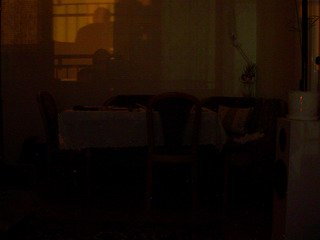
F3.0, 60s, ISO 400, Incadescent, Noise Reduction |
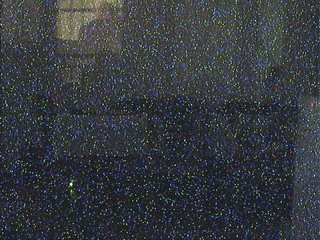
F3.0, 30s, Gain 100%, Incadescent, AMP OFF |
Now the lights were switched off.
Only light from 2 distant street lamps (80m, 100m)
was penetrating through balcony doors. The
green light on the Vesta's photo is green LED of
power supply visible only from Vesta's position.
|

The same picture as above (for better comparison) |
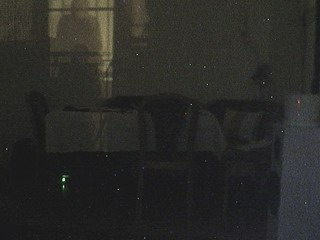
F3.0, 30s, Gain 100%, Incadescent,
AMP ON, Peltier cooled |
Regarding noise - digicam single
photo is comparable to cooled webcam photo.
Webcam photo was taken with shorter exposure and
is lighter. |
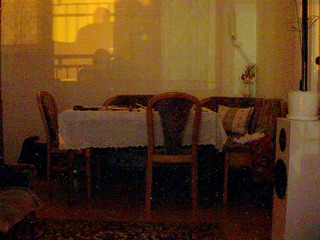
The same picture as above adjusted in K3CCDTools:
Levels: 0 - 50%
Gamma: 2.00 |
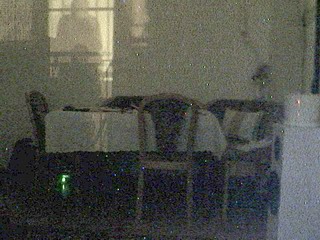
The same picture as above adjusted in K3CCDTools:
Levels: 10 - 60%
Gamma: 2.00 |
The above pictures were adjusted
in K3CCDTools -
adjusted levels and set gamma factor. Digicam
reveals its much higher dynamic range and better
color interpretation (see the flowers in corner
above pillow).
Furthermore we must remember, that digicam
was used without cooling! Digicam's internal
noise reduction system (subtraction of darkframe)
is very powerful!
|
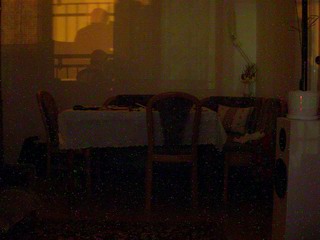
F3.0, 60s, ISO 800, Incadescent, Noise Reduction |
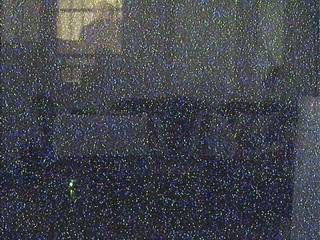
F3.0, 40s, Gain 100%, Incadescent, AMP OFF |
The same light conditions as
above, but another exposure... |

F3.0, 60s, ISO 800, Incadescent, Noise Reduction |

F3.0, 30s, Gain 100%, Incadescent,
AMP ON, Peltier cooled |
|

F3.0, 60s, ISO 800, Incadescent, Noise Reduction |

F3.0, 40s, Gain 100%, Incadescent,
AMP ON, Peltier cooled |
The last two comparisons show,
that F3, 60s, ISO800 exposure is more comparable
to Vesta Pro 30s exposure than 40s exposure |

F3.0, 60s, ISO 800, Incadescent, Noise Reduction |
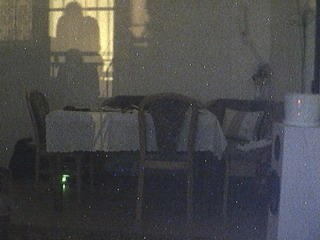
F3.0, 60s, Gain 100%, Incadescent,
AMP ON, Peltier cooled |
The last three comparisons show,
that digicam's F3 / 60s / ISO800 exposure is
the most comparable to Vesta Pro 30s exposure. That means, that
my Vesta 675SC2 has sensivity about ISO1600 (using
gain 100%).
|
Conclusion:
My tests show, that
my Philips Vesta 675SC2 webcam is about twice more
sensitive than Nikon Coolpix 995 digicam at ISO800. That
means, that webcam has sensitivity about ISO1600. This is
only rough estimation, I know, that webcam's
characteristic is not linear.
On the other hand, Coolpix 995 has better dynamic range
with much better resolution and color fidelity - so it
may provide better results after some post processing.
Tests in real astrophoto in future will unveil more...
Efficiency of Nikon
Coolpix 995 Noise Reduction
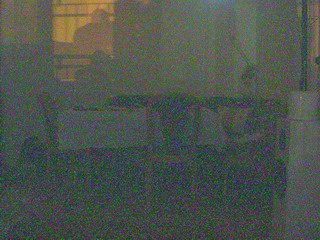
F3.0, 60s, ISO 800, Incadescent,
without Noise Reduction |
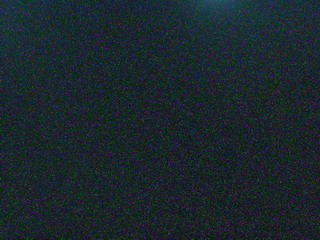
DarkFrame (with the same exposure) |
Note:
The thermal noise in original image is higher
than it is shown here. JPEG compression used here
causes removing higher frequencies in the images.The
CCD amplifier glow at top of image is visible.
|

F3.0, 60s, ISO 800, Incadescent,
with Noise Reduction |
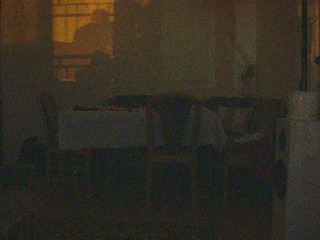
F3.0, 60s, ISO 800, Incadescent,
without Noise Reduction,
with subtracted DarkFrame (in K3CCDTools) |
Internal Noise Reduction gives
image with better contrast. The comparison
reveals, that internal noise reduction system is
very effective.
It seems (it's only my privat opinion), that
it uses DarkFrame subtraction with full 12-bit
images captured from CCD chip.
|
Computer generated images,
real images, drawings and texts are property of the
author and may not be reproduced or used without
permission of author.

Last Update:
16.06.2002
|